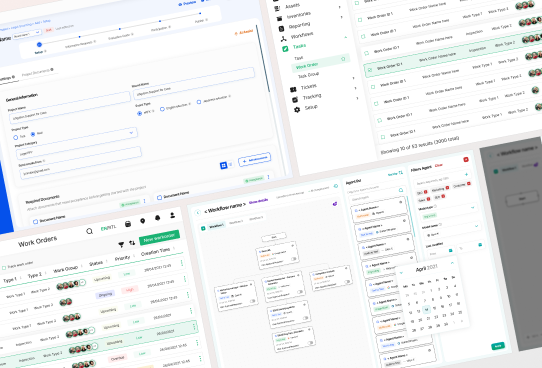Design Consistency
<p>Design consistency is a cornerstone principle in the realm of product design, ensuring that all elements of a product align harmoniously to create a coherent and intuitive user experience. By maintaining uniformity in visual and functional design aspects, consistency aids in building user trust and enhancing usability. This concept is crucial for digital products, especially within innovative and rapidly evolving sectors such as climate tech.</p>
<p>Historically, design consistency has been pivotal in establishing brand identity and user familiarity. For instance, iconic brands like Apple and Google have achieved user loyalty by consistently applying design elements across their product lines, from hardware to software interfaces.</p>
<h2>Components of Design Consistency</h2>
<p>Design consistency encompasses various elements, including:</p>
<ul>
<li><b>Visual consistency:</b> This involves maintaining a uniform color palette, typography, and layout across all user interfaces.</li>
<li><b>Functional consistency:</b> Ensuring that similar actions result in similar outcomes, enhancing predictability and reducing user learning curves.</li>
<li><b>Content consistency:</b> Utilizing a consistent tone of voice, terminology, and messaging throughout all communication channels.</li>
</ul>
<h2>Benefits of Design Consistency</h2>
<p>Maintaining design consistency offers numerous advantages:</p>
<ul>
<li><b>Enhanced Usability:</b> Users find it easier to navigate and interact with a product when design elements are consistent.</li>
<li><b>Brand Recognition:</b> Consistent design reinforces brand identity, making it more recognizable and memorable.</li>
<li><b>Increased Trust:</b> Predictable interactions build user trust and confidence in the product.</li>
<li><b>Efficiency in Development:</b> A consistent design framework streamlines the development process, reducing redundancies and saving time.</li>
</ul>
<h2>Challenges in Achieving Design Consistency</h2>
<p>Despite its benefits, achieving design consistency can be challenging:</p>
<ul>
<li><b>Scalability Issues:</b> As products evolve and expand, maintaining consistency across all elements can become complex.</li>
<li><b>Cross-Functional Collaboration:</b> Ensuring that different teams adhere to the same design principles requires effective communication and collaboration.</li>
<li><b>Iteration and Updates:</b> Frequent updates and iterations can disrupt design consistency if not managed carefully.</li>
</ul>
<h2>Implementing Design Consistency</h2>
<p>To implement design consistency effectively:</p>
<ul>
<li><b>Design Systems:</b> Develop a comprehensive design system that includes guidelines for visual and functional elements. Tools like <a href="https://material.io/design" style="color:#2896FF; text-decoration:underline;">Material Design</a> by Google and <a href="https://www.carbondesignsystem.com/" style="color:#2896FF; text-decoration:underline;">Carbon Design System</a> by IBM serve as excellent examples.</li>
<li><b>Regular Audits:</b> Conduct regular UX audits to identify inconsistencies and address them promptly. For climate tech companies, this could involve assessing the user interface of applications designed to monitor environmental data or manage sustainable practices.</li>
<li><b>Training and Documentation:</b> Provide thorough documentation and training for all team members to ensure adherence to design principles. This includes onboarding new hires and conducting refresher sessions for existing staff.</li>
</ul>
<h2>Case Study: Climate Tech Application</h2>
<p>Consider a climate tech company developing a digital platform to manage carbon footprint reduction initiatives. By implementing a consistent design approach, the company ensures that users can easily navigate through various features such as data input, analytics, and reporting tools. This consistency not only enhances user experience but also reinforces the platform's credibility and reliability.</p>
<h2>Conclusion</h2>
<p>Design consistency is integral to creating a seamless and intuitive user experience. By maintaining visual, functional, and content uniformity, companies can enhance usability, build brand recognition, and foster user trust. While challenges exist, leveraging design systems, conducting regular audits, and providing comprehensive training can help organizations achieve and maintain design consistency effectively.</p>
<p>Learn more about improving your <a href="https://www.nngroup.com/articles/consistency-and-standards/" style="color:#2896FF; text-decoration:underline;">design consistency strategies</a>.</p> <p>If you need inspiration on building credible and trustworthy brands, check out our work with <a href="https://www.whatifdesign.co/work/susteon-brand-website-design-carbon-capture-and-utilization" style="color:#2896FF; text-decoration:underline;">Susteon</a> and <a href="https://www.whatifdesign.co/work/labstart-website-design-climate-venture-studio" style="color:#2896FF; text-decoration:underline;">Labstart</a>.
<p>Looking for expert brand and communications support on your venture? <a href="https://cal.com/akhilak/what-if-design?duration=30" style="color:#2896FF; text-decoration:underline;">Book a free 1:1 consultation</a> with us today.</p></p>

Let's scale your impact with great design.
Free consultation, no sales pitch
Thank you! Your submission has been received!
Enter you email correctly!
Let’s talk
Nothing great is built alone.
Let’s connect about your vision, our work and how we can collaborate.
Get in touch
© 2025 What if Design
Stripe climate partner

